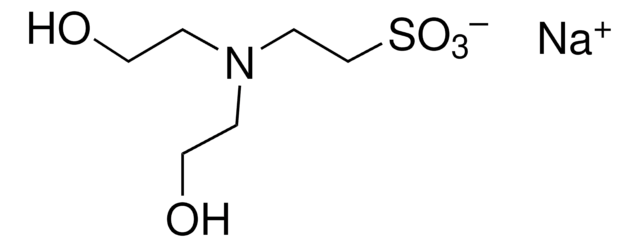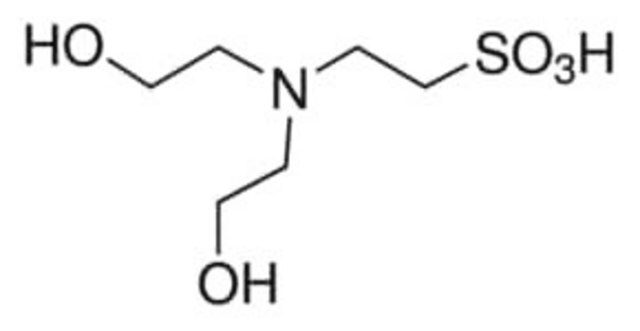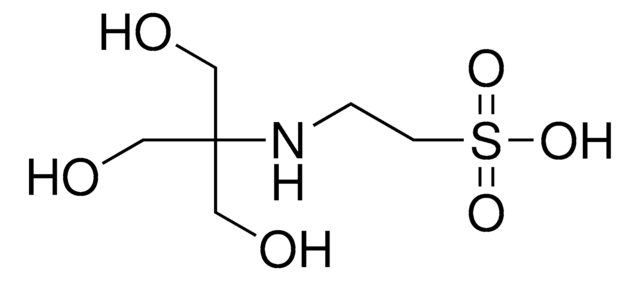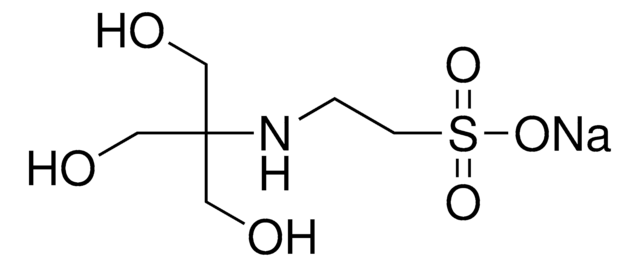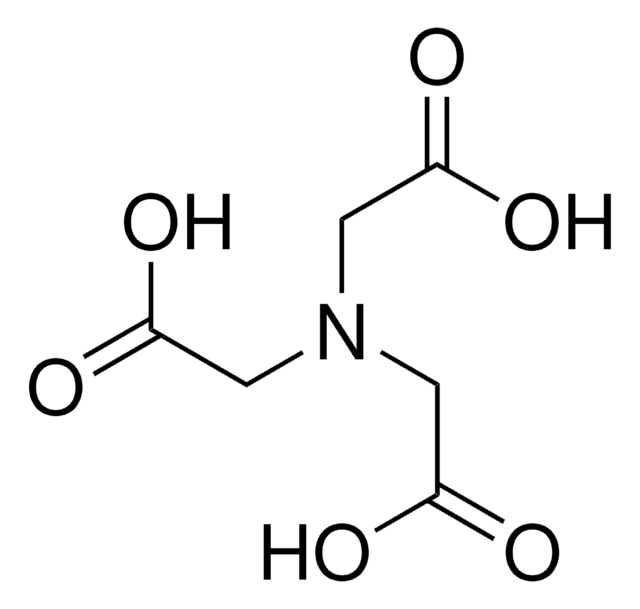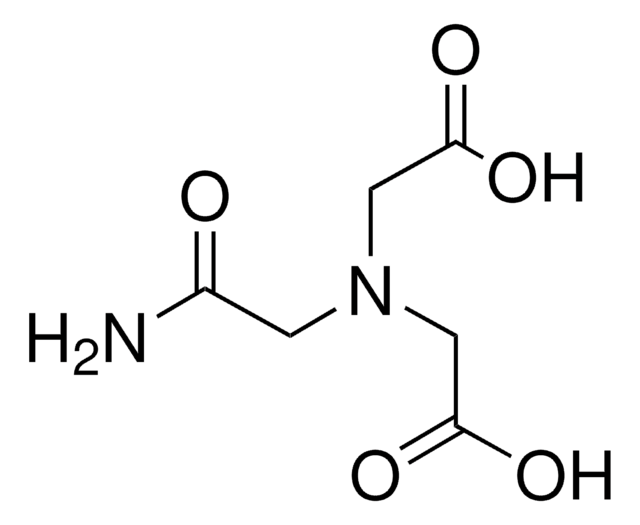B9879
BES
≥99.0% (titration)
Sinónimos:
2-(bis(2-hydroxyethyl)amino)ethane sulfonic acid, n,n-bis[2-hydroxyethyl]-2-aminoethanesulfonic acid, N,N-Bis(2-hydroxyethyl)-2-aminoethanesulfonic acid, N,N-Bis(2-hydroxyethyl)taurine
About This Item
Productos recomendados
Ensayo
≥99.0% (titration)
Formulario
crystalline
condiciones de almacenamiento
dry at room temperature
color
white
pH
2.5-5.0 (25 °C, 213.3 g/L)
intervalo de pH útil
6.4-7.8
pKa (25 °C)
7.1
solubilidad
water: 0.5 g/mL, clear, colorless
densidad
1.30 g/cm3 at 20—25 °C
1.35 g/cm3 at 20—25 °C
aplicaciones
clinical research
diagnostic assay manufacturing
general analytical
life science and biopharma
temp. de almacenamiento
room temp
cadena SMILES
OCCN(CCO)CCS(O)(=O)=O
InChI
1S/C6H15NO5S/c8-4-1-7(2-5-9)3-6-13(10,11)12/h8-9H,1-6H2,(H,10,11,12)
Clave InChI
AJTVSSFTXWNIRG-UHFFFAOYSA-N
¿Está buscando productos similares? Visita Guía de comparación de productos
Categorías relacionadas
Descripción general
Aplicación
Características y beneficios
- Suitable for Cell Culture media and as a Buffering solution in Biochemical and Molecular Biology Research
- Effective Buffering from pH 2.5-5.0 (25 °C, 213.3 g/L) with a pKa of 7.1 (25 °C)
- Tested to confirm low levels of heavy metal contamination, ensuring suitability for various applications
Otras notas
producto comparable
Código de clase de almacenamiento
11 - Combustible Solids
Clase de riesgo para el agua (WGK)
WGK 3
Punto de inflamabilidad (°F)
Not applicable
Punto de inflamabilidad (°C)
Not applicable
Equipo de protección personal
dust mask type N95 (US), Eyeshields, Gloves
Elija entre una de las versiones más recientes:
¿Ya tiene este producto?
Encuentre la documentación para los productos que ha comprado recientemente en la Biblioteca de documentos.
Los clientes también vieron
Nuestro equipo de científicos tiene experiencia en todas las áreas de investigación: Ciencias de la vida, Ciencia de los materiales, Síntesis química, Cromatografía, Analítica y muchas otras.
Póngase en contacto con el Servicio técnico